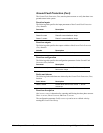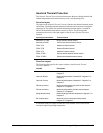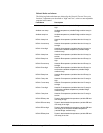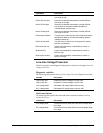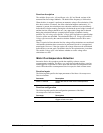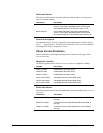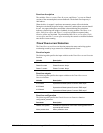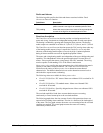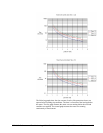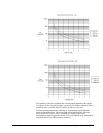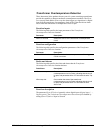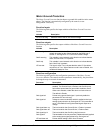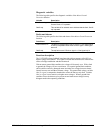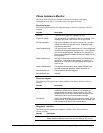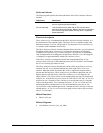
3-62
•
••
•
Chapter 3 Paramters/Functions Innovation Series Medium Voltage GP Type - G Drives GEH-6385
Faults and alarms
The following table specifies the faults and alarms associated with the Timed
Overcurrent Detection function.
Fault/Alarm Description
Timed over current Trip fault that occurs when one or more of the squared
phase currents is too high for an extended period of time.
TOC pending Alarm that occurs when one or more of the squared phase
currents is too high for an extended period of time.
Function description
The Timed Overcurrent Detection function provides overload protection for the
motor and wiring. It maintains an independent heating model for each motor phase.
The heating is modeled by squaring and filtering the phase currents. The heating
model outputs are contained in variables Ia^2 filtered, Ib^2 filtered, and Ic^2 filtered.
The Timed Overcurrent Detection function reports the TOC pending alarm when any
of the heating model outputs is large. It reports the Timed over current trip fault
when any of the heating model outputs is excessively high. Continued operation
during an alarm condition can result in degraded equipment lifetime.
The motor and wiring heating models are independent of the power bridge rating and
capability. This independence allows the general application of inverter drives to
motors. It also requires that motor wiring comply with NEC standards. The wiring
must be capable of withstanding 125% of the motor's rated current.
Motor protect class specifies the motor protection class, which indicates the motor's
capacity to run under overload conditions. The Timed Overcurrent Detection
function uses the setting of Motor protect class to determine motor thermal
characteristics. The thermal characteristics are used to determine current levels at
which the drive reports motor overheating.
The following values are available for Motor protect class:
• Class10:150%for30sec: IEC motors. Motor can withstand 150% overload for 30
seconds.
• Class20:150%for60sec: US standard motors. Motor can withstand 150%
overload for 60 seconds.
• Class30:150%for90sec: Specially designed motors. Motor can withstand 150%
overload for 90 seconds.
The overload capabilities listed above assume that the motor was running
continuously at a rated current prior to the overload condition.
The following graphs show the time a motor of each of the protection classes can
operate before reaching alarm conditions. The time is a function of the load applied
to the motor. The first graph assumes the motor was not running before the overload
condition was applied. The second graph assumes the motor was running
continuously at rated current.



